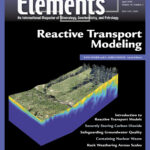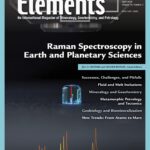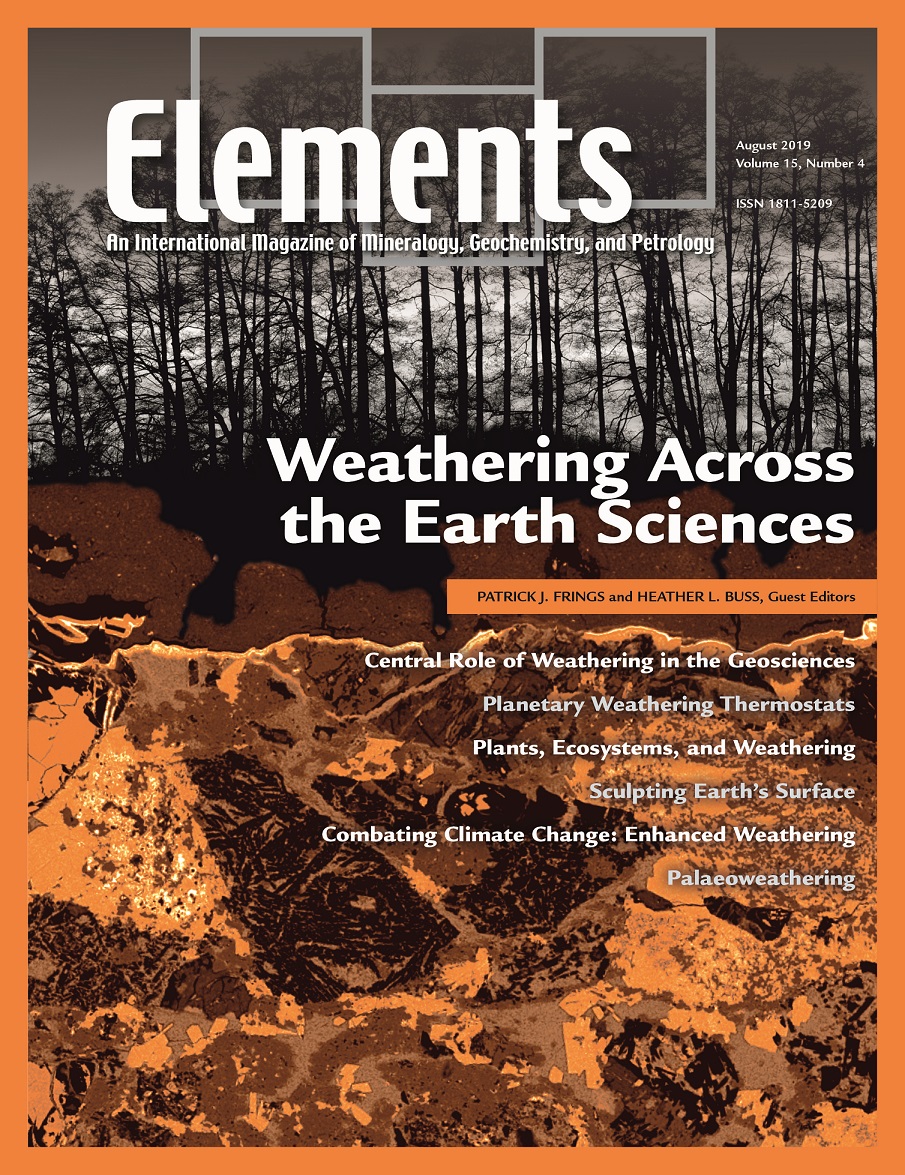
Reactive Transport Modeling, April 2019, Vol. 15, No. 2
June 28, 2024
Raman Spectroscopy In The Earth And Planetary Sciences, April 2020, Vol. 16, No. 2
June 28, 2024Weathering Across The Earth Sciences, August 2019, Vol. 15, No. 4
$20.00
This issue highlights the integral role of weathering processes across a range of geoscience fields. Chemical weathering – the loss of mass by mineral dissolution and export – is key to understanding how Earth’s skin functions.
Weathering Across The Earth Sciences
August 2019, Vol. 15, No. 4
This issue highlights the integral role of weathering processes across a range of geoscience fields. Chemical weathering – the loss of mass by mineral dissolution and export – is key to understanding how Earth’s skin functions. Weathering is the starting point for the biogeochemical cycles of most elements. It determines river and groundwater chemistry and provides nutrients to ecosystems. Weathering alters rock structure and susceptibility to erosion; soil and landscape evolution cannot be understood without considering the role of chemical weathering. Weathering of silicate rocks is a long-term sink for atmospheric CO2, and has been crucial in maintaining our planet’s habitability over billions of years … and may constitute a geoengineering strategy. The issue is the state-of-the-art on these topics and explores the linkages between them.
Why You’ll Love Elements Magazine:
- Expert Contributors: Articles written by renowned researchers in the field of geoscience.
- Engaging Content: Join a community of readers who are passionate about Elements.
- Exceptional Quality: Each issue is printed on high-quality paper with stunning visuals and detailed illustrations that bring complex scientific concepts to life.
Order your copy of the August 2019 issue of Elements magazine today and study weathering across the Earth sciences.
Related products
-
On The Cutting Edge: Teaching Mineralogy, Petrology, And Geochemistry, April 2007, Vol. 3, No. 2
$20.00New advances in research on learning have important implications for teaching mineralogy, petrology, and geochemistry. Effective instructional practices are increasingly student centered, address diverse student learning styles, and employ a variety of active-learning strategies.
-
Arsenic, April 2006, Vol. 2, No. 2
$20.00Arsenic is an element known throughout history as a classic poison. Currently, very small but highly significant concentrations of this element in drinking water supplies are causing massive health problems to many millions of people in some of the world’s poorest nations, and more localised sources related to mining and processing are also a concern.
-
Fluids in Planetary Systems, January 2005, Vol. 1, No. 1
$20.00Water and other geofluids play an important role in the geochemical and rheological evolution of the Earth and other bodies in the solar system. These fluids are responsible for the formation of hydrothermal mineral deposits, affect eruption behavior in volcanic systems and the geophysical properties of the mantle, and significantly affect the way in which rocks deform and fracture.




